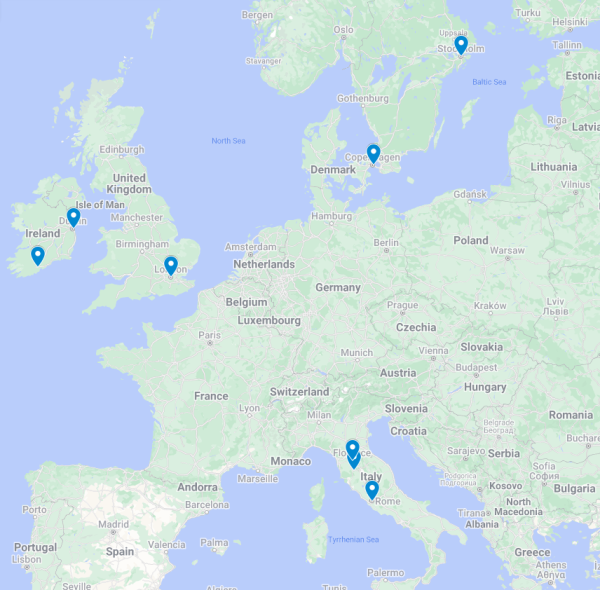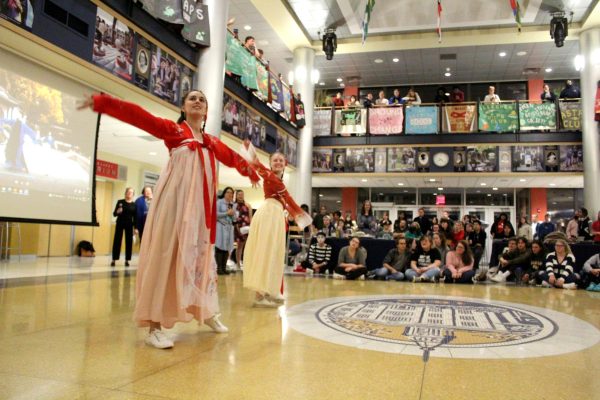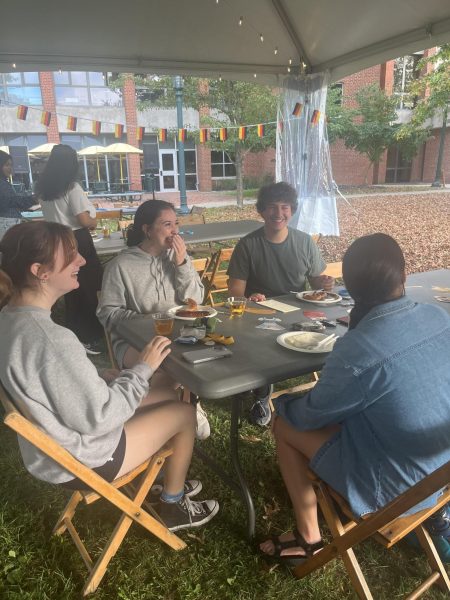Spanish House students share thoughts, highlights of experience
Nestled at the top of the hill of Allegheny College lies North Village I building C, which holds the Max Kade International Wing. This building is home to six apartments, with each being home to its own enriching culture.
The building complex contains two Spanish-speaking apartments, which make up the Spanish House. The 10 students who live in the house are a combination of Spanish majors or minors, native Spanish speakers or those who came from Spanish-speaking countries.
The Max Kade Spanish House sets out three main targets for students living there to learn, one of them being to immerse themselves in the language. What this means is that students will increase their ability to speak the language from just being in the house and speaking to their housemates.
Bryan Quiroz, ’21, described his experience of living in the Max Kade Spanish house.
“Living in the Spanish house gives students an opportunity to learn the language and really improve their grasp of it, being in that type of environment every day,” Quiroz said.
He also emphasized the importance of culture and how living in the house will improve not only a student’s Spanish speaking abilities, but their understanding and experience with culture as well.
“I think that the biggest thing about living at the Spanish house is that although it will inevitably improve students grasp of the language, it also gives students an experience with culture, and really understanding and living in that culture,” Quiroz said.
Another goal of the Max Kade Spanish House is for students to grow in the language throughout their daily routines.. Students work to get better each day through experience and practice with the language.
The idea of the Max Kade International house, according to Noah Alex Spiro, ’20, is to provide a space for cultural learning as well as one that fosters development in foreign language learning.
“The most beneficial part of living in Max Kade is the ability to meet the (teaching assistants) who come from all over the world to teach their native language to Allegheny students,” Spiro said. “Having people to live with and talk to with varying world views who can share their culture is eye-opening culturally and enriching.”
Spiro recommends the Max Kade housing to new students and students already on campus, and emphasizes the benefits he has already received from the experience.
“I chose this housing because I love Hispanic culture, and because I’m a Spanish major,” Spiro said. “By living in the Spanish house, I am able to culturally enrich myself further, and learn Spanish at a high level through conversation and cultural events that we host.”
Benjamin Fisler, ’22, talked about the experience and the environment he experienced last year while living in the Spanish house.
“The Max Kade Spanish House was a quiet place to live,” Fisler said. “Not a lot happened most of the time, but it was a nice quiet place, and having a full kitchen, a TV to watch movies with friends and air conditioning were all nice luxuries I cannot take for granted.”
Spiro noted that he was able to practice his Spanish speaking abilities by engaging with the Spanish TA. But on a separate note, he wished him and his housemates spoke more Spanish together.
“Unfortunately, I do not feel that it was necessarily beneficial to my Spanish speaking abilities because my housemates and I never really spoke Spanish to each other, but I can definitely see that in some cases it does, which can be beneficial,” Spiro said. “However, we did speak in Spanish to the Spanish TA at times.”
The Max Kade Spanish House is also known to hold events and activities that will get students involved on campus.
“There were definitely a few interesting events at the Spanish house like designing decorations for Dia de los Muertos and then seeing them at the celebration,” Spiro said.
The third goal of the Max Kade Spanish house is to show students responsibility and how to take ownership of their efforts and abilities. International housing encourages students to continue to learn and never be satisfied with not only speaking the language, but also experiencing and understanding the culture.








